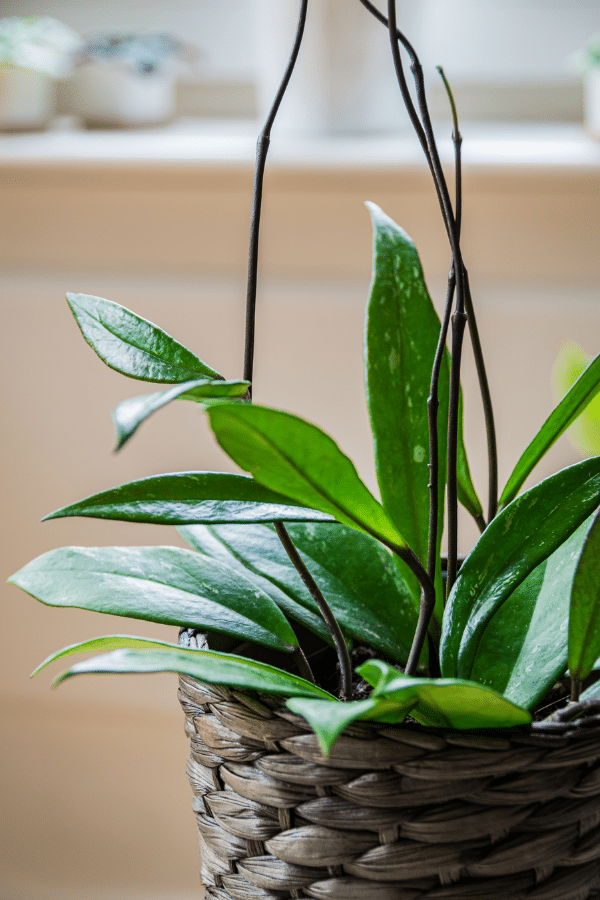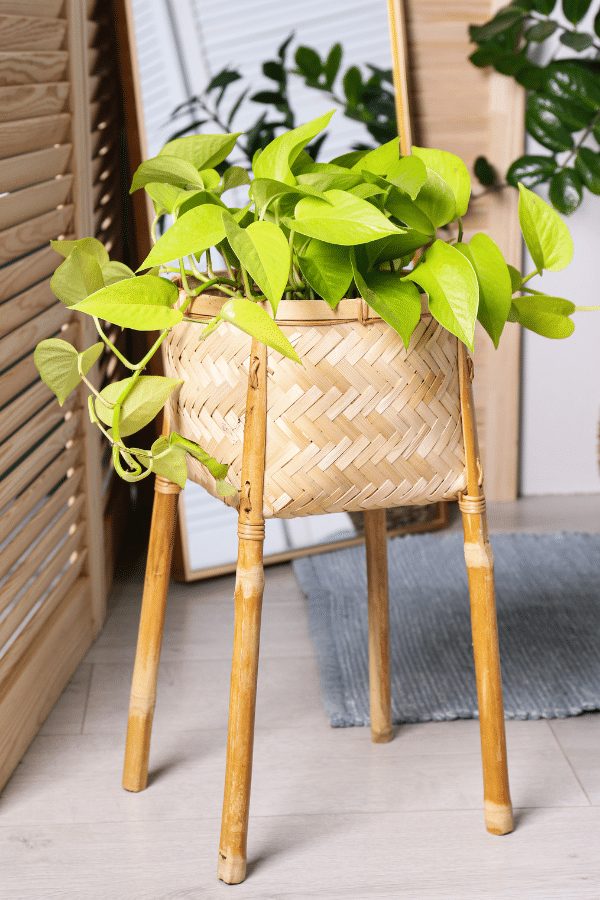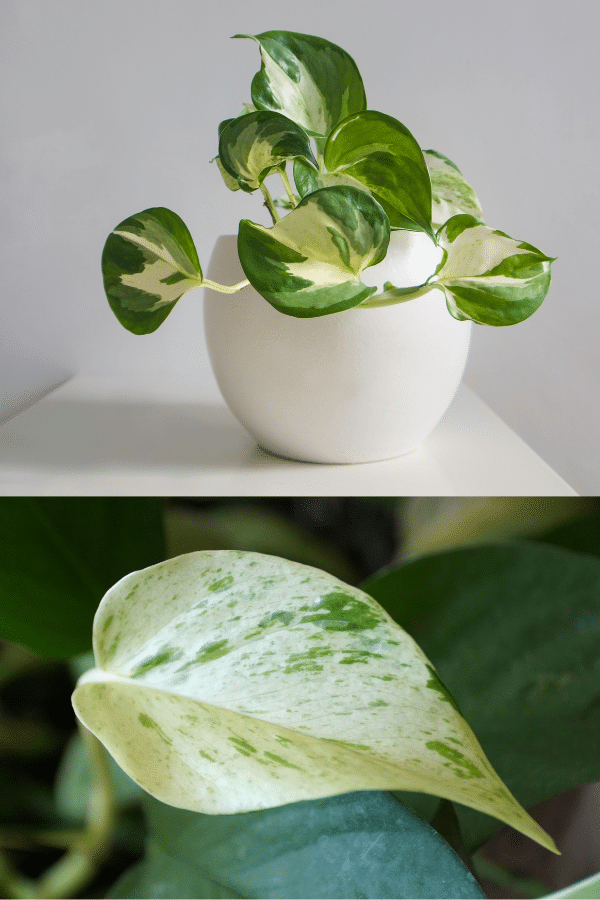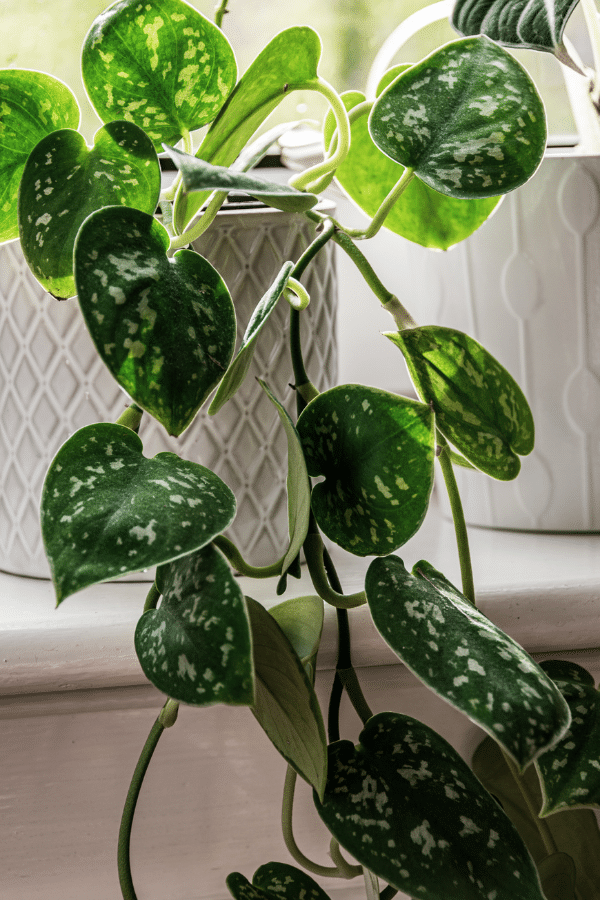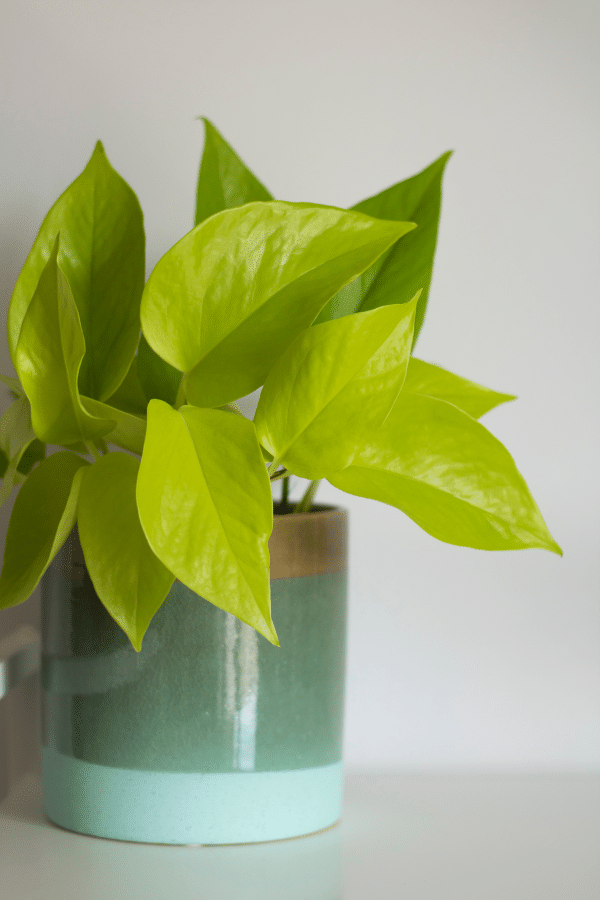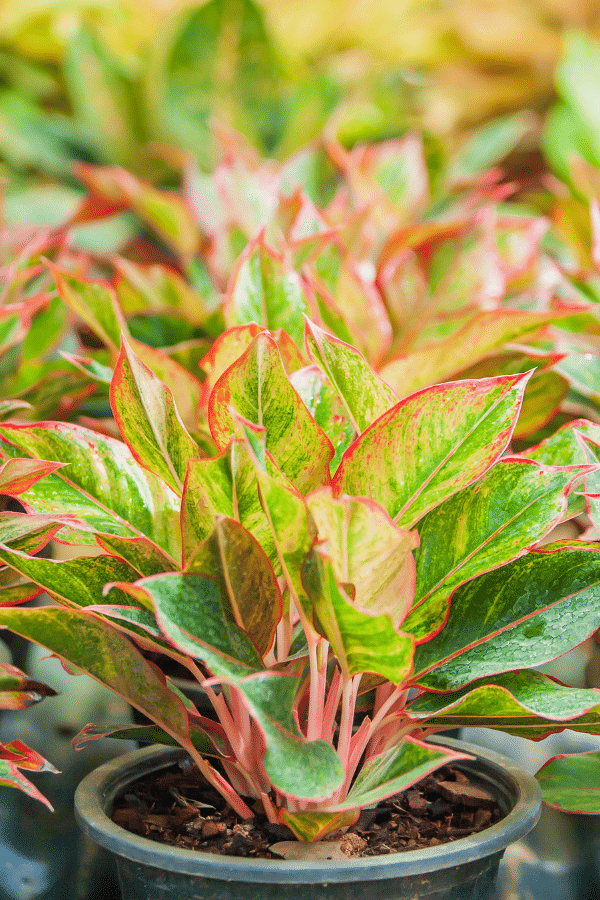Peperomia Ferreyrae
Scientific Name: Peperomia Ferreyrae
Common Name: Pincushion Peperomia, Green Bean Peperomia, Happy Bean Plant
Peperomia Ferreyrae care is rated as a medium care level as watering can be a difficult thing to get right with this plant. This Peperomia is slow-growing and the plant will stay very compact in size, perfect for small spaces.
To give this Peperomia plant the best care, it requires well-draining soil with a base of peat moss or coco coir, allow the soil to dry out between waterings, provide it with bright indirect sunlight, temperatures ranging from 65-75F, and high humidity levels.
Quick Care Overview
| Common Name | Pincushion Peperomia, Green Bean Peperomia, Happy Bean Plant |
| Scientific Name | Peperomia Ferreyrae |
| Family | Piperaceae |
| Origin | Peru |
| Growth Rate | Slow |
| Identification | Slender lime green leaves that are peapod in shape |
| Height | Up to 12 inches tall |
| Soil | Peat moss or coco-coir that drains well |
| Water | Allow the top few inches of soil to dry out before watering |
| Temperature | 65-75F |
| Sunlight | Bright indirect sunlight |
| Toxic to Cats & Dogs | No |
| Toxic to Humans | No |
| Pests | Mealybugs, scale, nematodes |
| Diseases | Root rot |
Below we will dive deep into this Peperomia Ferreyrae care guide.
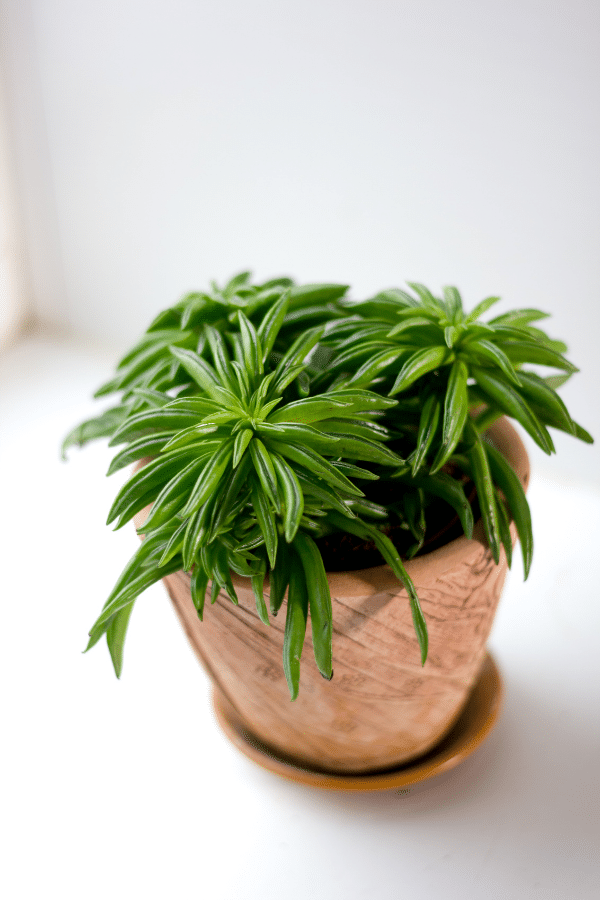
Peperomia Ferreyrae History
Peperomia Ferreyrae is a Peruvian native semi-succulent perennial plant from the Piperaceae family. Also known as the Pincushion Peperomia, the Happy Bean Plant, and Green Bean Peperomia, this Peperomia’s unique foliage differs from many others commonly found in the family which feature rounded leaves.
Peperomia Ferreyrae Identification
The Pincushion Peperomia presents with bright lime slender green leaves that appear to be peapod shaped. Foliage grows on thick erect stems that are up to 3 inches long.
Peperomia Ferreyrae Growth Facts
This tropical plant will remain compact in size and is perfect for small spaces.
How Big Does a Peperomia Ferreyrae Get?
This plant may become up to 12 inches tall.
Peperomia Ferreyrae Care
This long-lasting plant is extremely easy to care for and is perfect for beginners.
Peperomia Ferreyrae Soil
This Peperomia grows best in peat or coco-coir-based soil with excellent drainage. A commercial potting soil with a 2:1 ratio of peat to perlite or sand will work nicely for this plant.
Peperomia Ferreyrae Fertilizer
Beginning in spring, you should feed your plant with a diluted liquid fertilizer twice a month during active growth. During summer, the frequency of feeding should be reduced to monthly. By the end of summer, you should halt fertilization altogether. Do not feed your Peperomia during fall and winter. Ensure that you follow all label instructions and do not overfeed.
Peperomia Ferreyrae Watering
Watering can be a bit tricky when it comes to the Peperomia Ferreyrae. This plant likes to remain moist but is sensitive to overwatering. Being a semi-succulent, this plant stores some water and is considered moderately drought-tolerant. It is suggested to allow the top 1-2 inches of soil to dry completely before rewatering. Watering frequency should be reduced in winter.
Peperomia Ferreyrae Light Requirements
While this Peperomia can survive in lower light conditions, it grows best when exposed to bright, indirect light for part of the day. However, it should not be exposed to direct sunlight, as this can cause leaf scorching quickly.
Peperomia Ferreyrae Temperature & Humidity
Being a tropical plant, this Peperomia likes to be grown in warm, humid environments between 65-75 degrees Fahrenheit. You should never expose your Peperomia to temperatures below 50 degrees Fahrenheit, as this may cause permanent damage. Your Peperomia will also like being grown in humid conditions, such as in a bathroom. Alternatively, you may mist your plant and install a humidifier or a pebble tray to help the growth of your peperomia.
Repotting Peperomia Ferreyrae
You should repot your Peperomia when its roots are sticking out of its container’s drainage holes. This Peperomia, being a compact plant, likely will not need to be potted often. When repotting, you should select a container that is only 1-2″ larger than the previous container, or you may repot your plant into the same container and refresh its soil.
Peperomia Ferreyrae Maintenance & Pruning
The Pincushion Peperomia is not hard to maintain and does not require a lot of pruning. This hassle-free plant doesn’t need much maintenance. Any diseased, discolored, or dead foliage may be removed as necessary,
Peperomia Ferreyrae Propagation
Peperomia Ferreyrae may be propagated through stem or leaf cuttings. To take a stem cutting, cut a 2-3 inch piece of stem with a couple of leaves using clean shears. Allow the cutting(s) to callus overnight before planting. Plant the cutting into a container with fresh soil and water thoroughly. It is suggested to cover the container with plastic, a bottle, or a container to trap moisture which will encourage rooting. Place your cuttings into indirect light and keep warm.
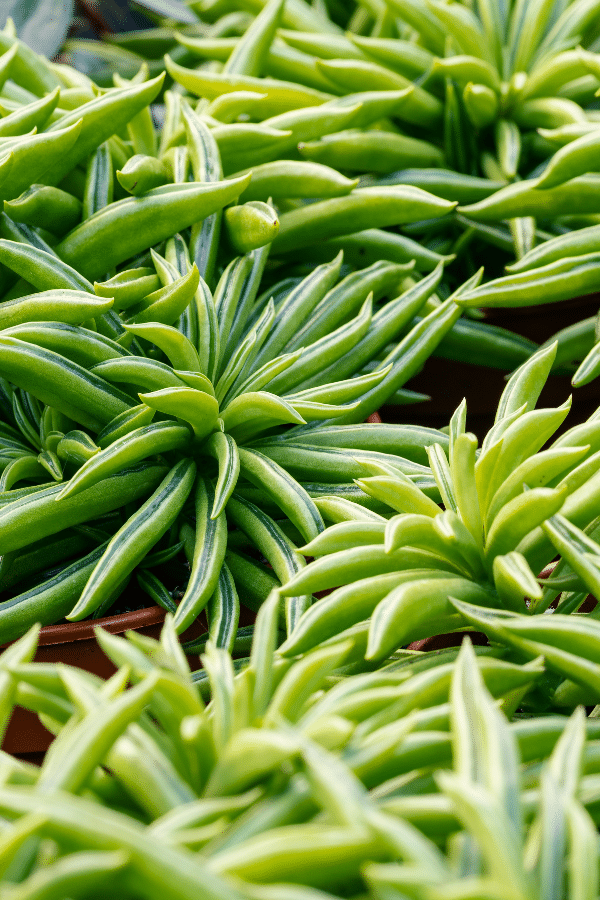
Peperomia Ferreyrae Toxicity
Peperomia Ferreyrae is not toxic to humans, cats, or dogs. Making it pet-friendly and human-friendly, you can be worry-free if you have curious pets or small children with this plant!
Toxicity to Humans
Peperomia Ferreyrae is non-toxic to humans and is safe to touch. However, it should not be ingested as it may cause stomach discomfort.
Toxicity to Cats & Dogs
Peperomia Ferreyrae is considered non-toxic to cats and dogs and is safe for them to be around. However, you should not let your plant consume this plant as it may cause stomach discomfort.
Peperomia Ferreyrae Problems
Peperomia Ferreyrae Leaves Turning Yellow
When leaves of Peperomia Ferreyrae turn yellow, it typically indicates that your plant is stressed. Foliage may turn yellow due to overwatering, underwatering, nutrient deficiencies, inadequate sunlight, or pest infestation.
Peperomia Ferreyrae Leaves Turning Brown
When foliage of Peperomia Ferreyrae turns brown, it is often due to overwatering and associated plant disease, such as root rot. Ensure that you do not overwater your Peperomia, and that your plant is not left within standing water in the plant’s drainage tray.
Peperomia Ferreyrae Diseases
The most common plant diseases to affect Peperomia Ferreyrae are related to bacterial and fungal growth that stems from overwatering. Diseases such as root rot can be fatal to your plant. Ensure that you do not overwater and do not allow your Peperomia to be left in water within the plant’s drainage tray.
Peperomia Ferreyrae Pests
Peperomia Ferreyrae may become susceptible to several indoor houseplant pests such as mealybugs, scale, nematodes, and more. Upon identifying a pest infestation, treat your plant with a pesticide such as neem oil or insecticidal soap, ensuring that you follow all label instructions.

